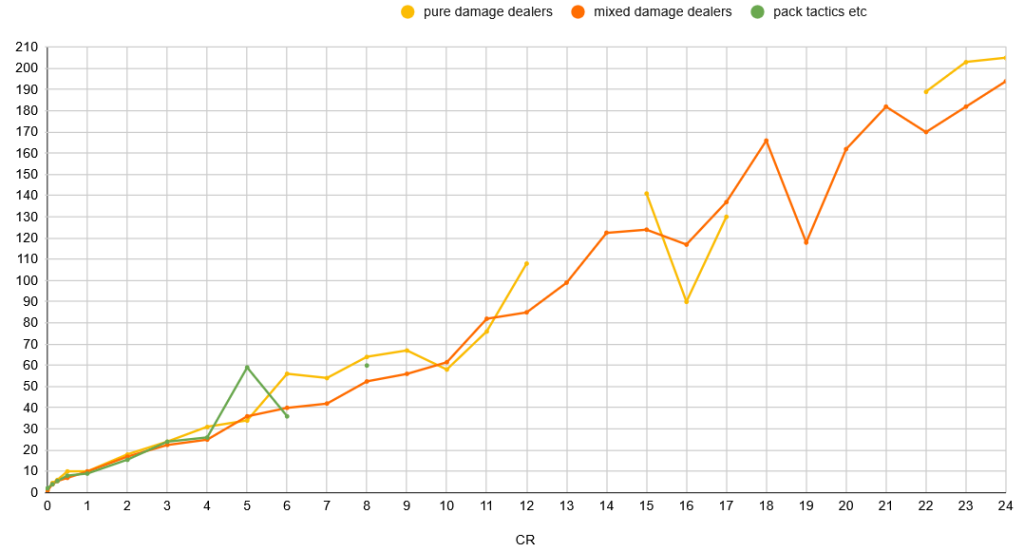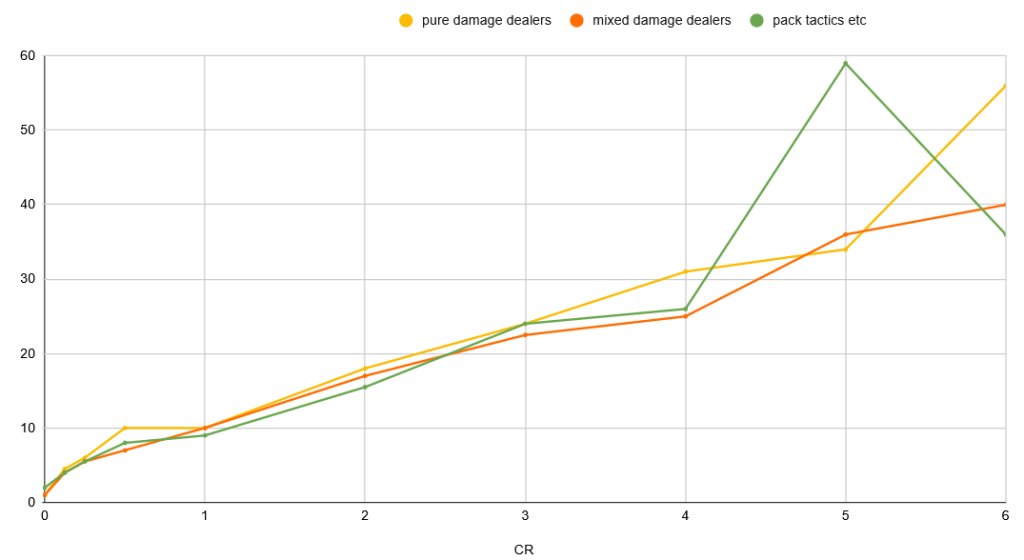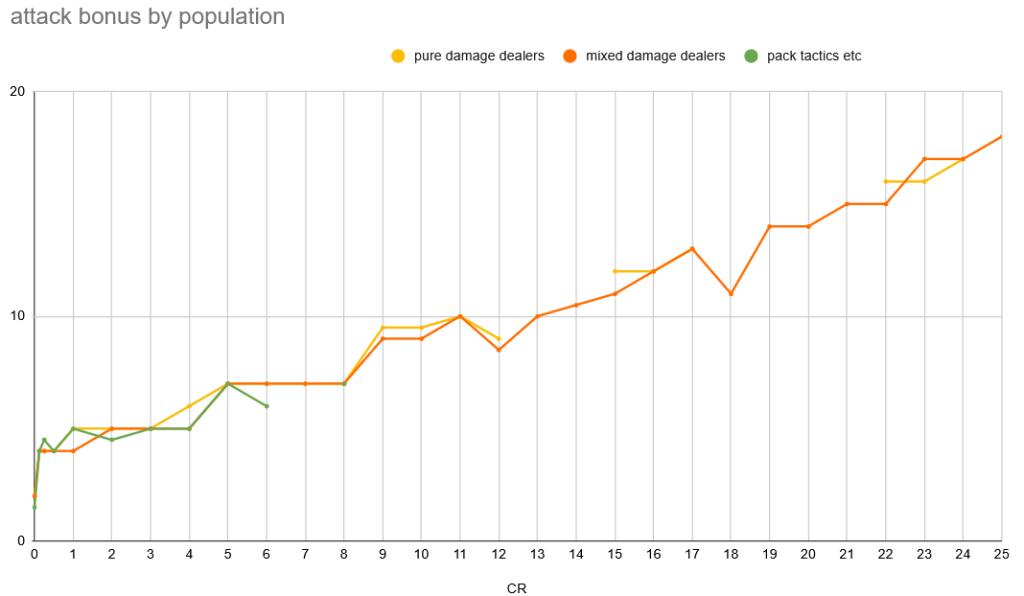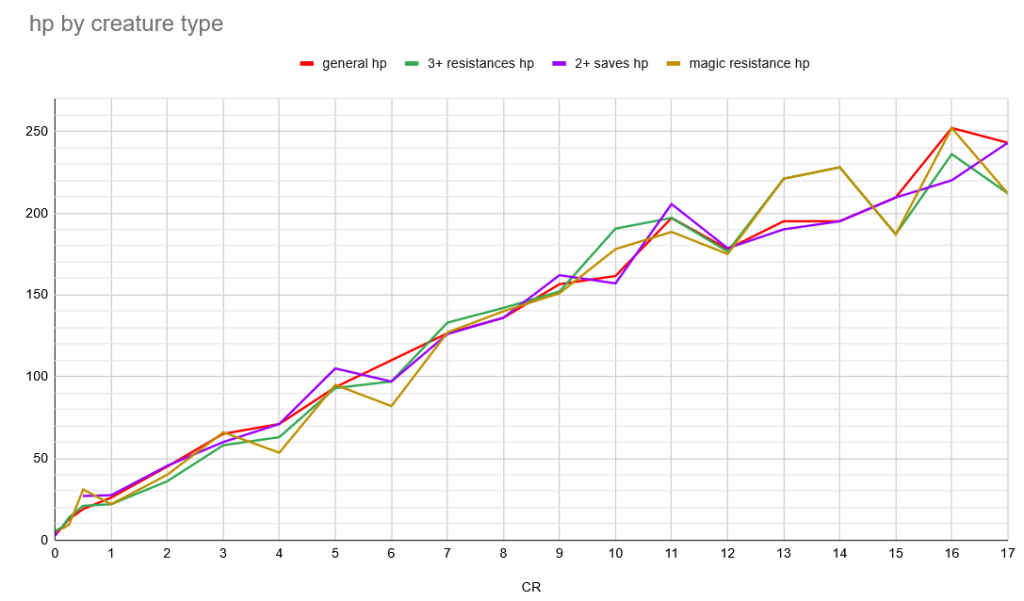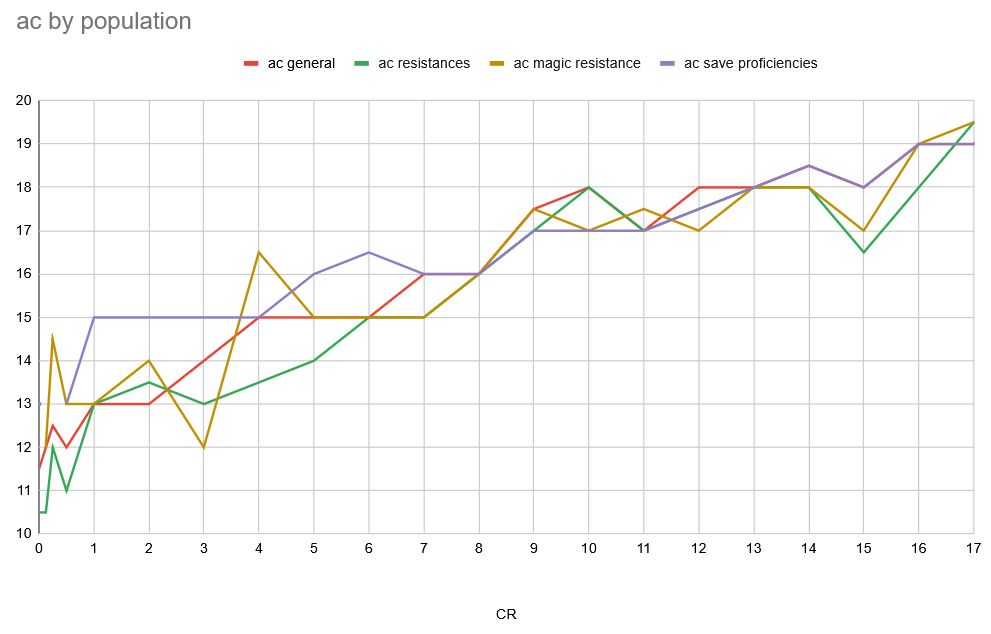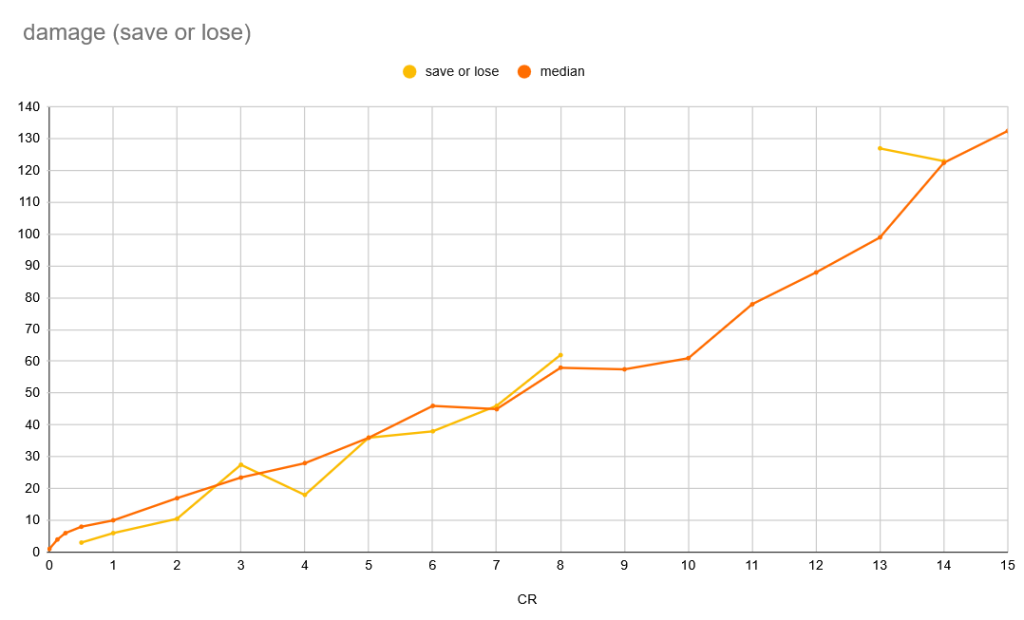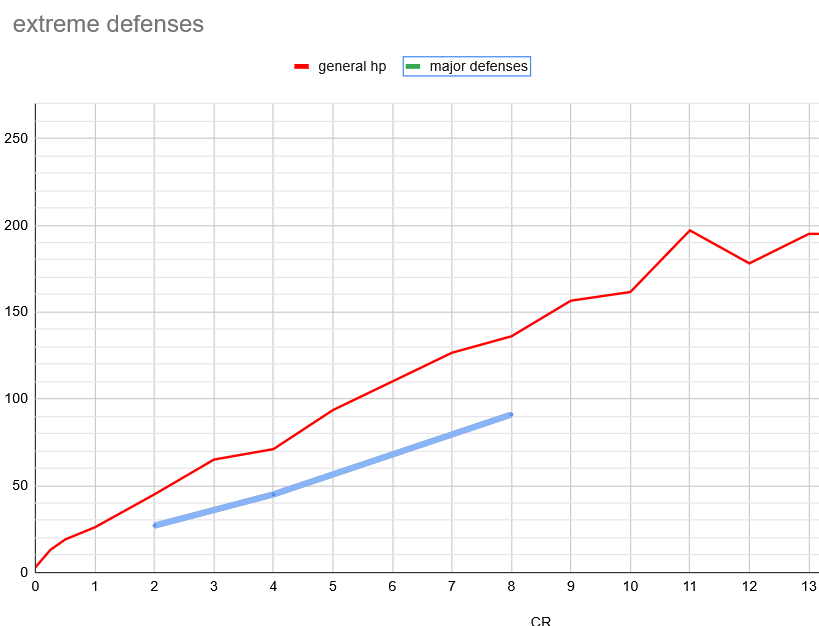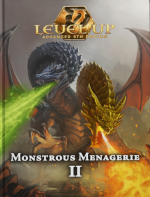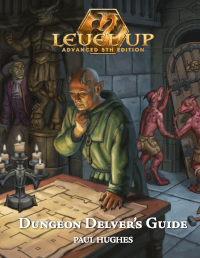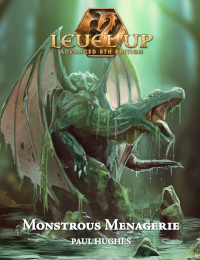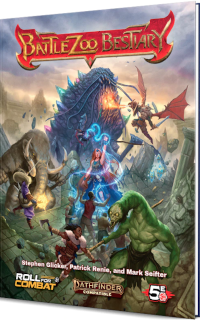In my post 2024 Monster Manual on a Business Card, I figured out the average base statistics (HP, AC, damage per round, etc) of 2024 monsters of each Challenge Rating. Using this as a starting point, you can start to design plausible monsters with the most common stats for their CR. But of course, a monster is more than the sum of its numeric stats! What about all of a monster’s exception-based tricks and tactics? if a monster can knock you prone or make an attack with advantage, what’s that worth? What’s it worth if a monster has resistances or immunities?
The 2014 Dungeon Master’s Guide had a handy guide that told you exactly what the D&D designers thought every monster adjustment was worth. Well, not every adjustment, of course – not even most, since most monsters have a few completely unique features. But enough that you could gauge the approximate value of an effect. 2024, of course, has no such chart!
I’m going to be honest: I’m starting from a place of skepticism regarding the 2014 chart. Its adjustments often seemed to me to offer the illusion of precision, with most features making fractional adjustments to a monster’s offensive or defensive rating that wouldn’t actually affect its final Challenge Rating one way or the other. For instance: Pack Tactics increases a monster’s effective Attack Bonus by 1, which has a sub-50% chance of increasing its Offensive Challenge Rating, which in turn gets averaged with its Defensive Challenge Rating to come up with its CR: a very longwinded way of saying “Pack Tactics is worth about +0.2 CR” – which is a conclusion that I’m very dubious of anyway.
The tiny offensive an defensive values assigned to most features in the 2014 DMG make them very hard to test for, as the microadjustments they make to CR are likely to get swallowed up in the general noise and variance of monster statistics. An in fact, when I looked at the 2014 monster stats, I never was able to make much headway in determining much of a change in monster numbers based on their non-numeric features, beyond some big outliers like Damage Transfer.
But that was 2014. In 2024, let’s do a spot check to see whether we can figure out how much some offensive and defensive capabilities are worth!
offensive capabilities
Analysis of this type relies on a lot of assumptions. First of all, I’m assuming that, as in the 2014 DMG chart, traits that increase a monster’s damage output, like advantage, should reduce its other offensive capabilities, like damage per attack. For instance, Pack Tactics raises a monster’s “effective Attack Bonus;” it doesn’t directly modify a monster’s effective AC or hit points. With that in mind, when it comes to offensive abilities I’m only going to look at their effect on DPR and attack bonus to see if there are measurable effects of offensive traits.
I’m also dealing with an extraordinarily small data set, with only 500 total monsters. Filtering that data down to offensive capabilities with reasonable numbers leaves us with almost nothing to look at. I’m going to look at 3 data sets:
In a perfect world, we’d expect the all-damage monsters to do a bit more damage than average, since they don’t have to pay for non-hit point effects like imposing conditions. We might expect the Pack Tactics monsters to do a bit less than average damage, since we know they’re paying for one non-damage effect. On the other hand, we know that Pack Tactics monster tend to be pretty simple without a lot of other features, so maybe their offensive stats shouldn’t be that far off average.
OK, here’s how it graphs out:
As you can see, the data is pretty messy. You can sort of make a case for the pure damage dealer monster dealing more damage that the norm, especially if your eyes are drawn to CRs 6 through 9. But mostly everyone looks pretty tied up until CR 6 or so (except that big pack-tactics damage spike at CR 5: the lone data point, the sahuagin baron, happens to hit like a truck. The perils of drawing conclusions from small data sets!)
Let’s zoom in on CR 0 through 6, which is where most of D&D play happens anyway:
It looks like everyone is separated by about 1 or 2 points of damage per round here. Even at low level, that’s fairly negligible (remember that one CR is worth about 7.5 damage per round)
That’s damage. What about attack bonus? Could offensive capabilities be accounted for with changes to accuracy? Let’s take a look.
Almost exactly the same story as damage.
There are two competing stories we can tell about this offensive capabilities data, and we don’t have enough data points to determine which is correct:
a) There’s a very small DPR/accuracy boost for monsters whose only offensive trick is dealing damage, or
b) The three populations are essentially tied: if there is any difference between them, it is too small to be measurable with the amount of data we have.
Both statements may be correct! Another few years of monsters from different 2024-compatible books might clear it up, but for now, here’s my conclusion on damage, as unsatisfying as it is: the data neither proves nor disproves an inverse connection between raw DPR and non-damage abilities such as advantage. In short, when designing monsters, there are no real formulae you can abide by to match WOTC’s 2024 house style for the offensive capabilities we tested. Even if a monster has lots of tricks, it can still do lots of damage at the same time – but feel free to give out a small damage bonus to monsters that are pure bruisers.
defensive capabilities
For defensive capabilities, we have some nice, big datasets: monsters with a lot of saving throw proficiencies; monsters with a lot of resistances and immunities; and monsters with Magic Resistance, which is one of the most common traits (and, according to the 2014 DMG, “raises the monster’s effective AC by two.”
First of all, how common are saving proficiencies and immunities? I’ve counted it out on the right. 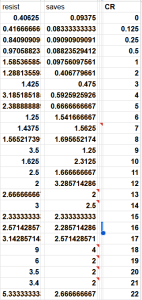
The first column is the average number of damage resistances per CR. (A damage immunity counts as two resistances.) The second column is the average number of saving throw proficiencies per CR.
Resistances: By CR 1, the average monster has more than 1 resistance. While there are some high numbers in this column, even at high levels lots of monsters have no more than 2 resistances (or 1 immunity). For our purposes, I’ll say that a monster has high resistances if it has more than 3.
Saving Throws: The average monster has less than 1 saving throw proficiency up to CR 5. The number of saving throw proficiencies seems to be more in control than in 2014, with it rarely getting much above 2. I’m considering a monster to have a lot of saving throw proficiencies if it has more than 2.
Here’s a graph of monster HP, high-resistance monster HP, high-saving throw proficiency monster HP, and HP of monsters with Magic Resistance.
Again, none of these effects add up to very much: all the lines are pretty close together. There’s a mild trend for magic resistance monsters and monsters with a lot of resistances to have slightly fewer hit points than average, but this breaks down around CR 7. There’s no discernable trend for monsters with a lot of saving throw proficiencies. Even the areas of strongest correlation – between resistances/hp and magic resistances/HP between CR 2 and 6 – don’t add up to more than a 10-hit point penalty and never rise to the level of being statistically significant.
Let’s look at AC:
As we’d expect, there is not much to see here beyond noise (especially considering how much variance there is in AC in general). You could say that creatures with a lot of resistances and immunities seem to have ACs that are a tetch lower than average, and creatures with a lot of save proficiencies have AC that is a little high – but nothing definitive emerges that I’d hang my hat on.
extreme monsters
There are two more populations I want to look at before we wrap up: these are the monsters with the most extreme abilities in the game. I’ve put together two small groups of monsters:
1) The “save or lose” monsters: monsters where one or two failed saving throws takes you out of the contest regardless of hit points. The monsters we’ll look at are (from low to high CR) cockatrice, harpy, myconid sovereign, carrion crawler, gibbering mouther, intellect devourer, basilisk, grell, chuul, umber hulk, chasme, medusa, mind flayer, cockatrice regent, beholder, and death tyrant. As you can see this is a pretty select list.
Here’s how they perform with just their damage attacks and no non-damage effects considered:
With the caveat that it’s absolutely irresponsible to be trying to do analysis with numbers this small (around 1 or 2 monsters per CR), you can kinda conclude that they underperform average numbers – but not consistently. There are plenty of Save or Die monsters that can also kill you quite well the old fashioned way. (That weird little flag at CR 13 is the beholder, who seems to be a pleasant surprise damage-wise – I can’t wait to run one and see if it has a better feel than the 2014 one.)
What about the defensive juggernauts? I’ve IDed only 3 monsters that can really avoid a ton of damage using their special abilities: ghosts (possession) and cloakers and rugs of smothering (damage transfer).
Finally, some definitive results – for these three hand-picked monsters! They have noticeably low hit points, in line with the massive modifications suggested for their features in the 2014 DMG (“double the monster’s effective hit points” for all three monsters). The hit point trend line looks like it stands around 2/3 average hit points for these monsters. I think we can take this as the biggest modification you can make to a monster based on some of the most extreme features in the core game.
Inconclusions
The correlations we’ve graphed between attack capabilities and statistics and between defense capabilities and statistics are suggestive without really being convincing. To me, what it looks like is this: I bet there’s still a master spreadsheet at WOTC headquarters that monsters get passed through. Defensive and offensive non-numeric capabilities, like effects that assign conditions, all have weightings which are applied to monsters, changing their effective hit points, damage per round, and so on, as in the 2014 DMG – but these weightings are, with a few exceptions, very small and don’t make much of a difference in the final monster’s numbers. That lines up with the fact that most of the monster populations that we’ve looked at are fairly uniform, with average stats that are very close to each other with only minor variations – but the variations tend to break in the direction we’d expect to more often than not (for instance, monsters that only deal damage are slightly more likely to deal a little more damage than average). I think there are correlations here, even if they don’t rise to the level of statistical significance – they’re just tuned very low. How low? Any modifications made for any particular trait is swamped by the general noisiness of the data.
Do we need to replicate this while we’re designing monsters? Do we need to make a table of traits and effects, along with miniscule modifications to monster statistics? We could – and it would be satisfying to do so. D&D creators like myself like to have rubrics to follow (witness the fact that I just spent 5000 words over the last two blog posts trying to figure out the 2024 monster design rules!) But in this case I think there’s not enough payoff for the effort of recreating WOTC’s spreadsheet.
The fact is that, apart from a few big outlier monsters, most critters have stats that are fairly similar to those of other monsters of their Challenge Rating. Most variations kind of make sense based on a monster’s story: for instance, an ogre has very low AC, very high hit points, and somewhat low damage per round – but the damage is swingy because the ogre has fewer attacks per round than most CR 2 monsters.
My conclusion is this: to write 2024-style monsters, vary your monster’s stats based on their story, with minor variations (up 10%) being common and major variations (up to 30% in the most extreme cases) being rare. If a monster is very defensive, with thick armor plates, give them high AC and maybe a bit lower damage to match. If a monster has Pack Tactics, you can take that into account as part of their story: because they’re so effective in a group, maybe you can tweak some other stat down–or not. 2024 monster design is forgiving and the monster will be fun either way. The one thing you shouldn’t do is vary all of your stats up. If you do, you’ve just invented a higher-CR monster! (This is also true for all low-stats monsters, although I’d guess few monster designers feel tempted to err in this direction.)
D&D is an exception-based game, and there is really no chart that can capture every monster’s non-numeric gimmicks. We invent new monster powers each time we invent a monster, and their effectiveness is contingent on a thousand things that emerge in actual play at individual tables. We’re fooling ourselves if we think we can determine exactly how good Pack Tactics, or anything else, is. Monster design is an art, not a science. Just have fun making art.
The above is an almost nihiistic conclusion for a monster designer like me. Do I buy it? I mean, I’m coming around to it more and more: there’s never going to be a list of options you can click to develop a perfectly-balanced monster. But I do think there is some value in trying to figure out the values of various conditions and effects. To do so, I think we’ll have to leave the Monster Manual behind, so that’ll be another post.

